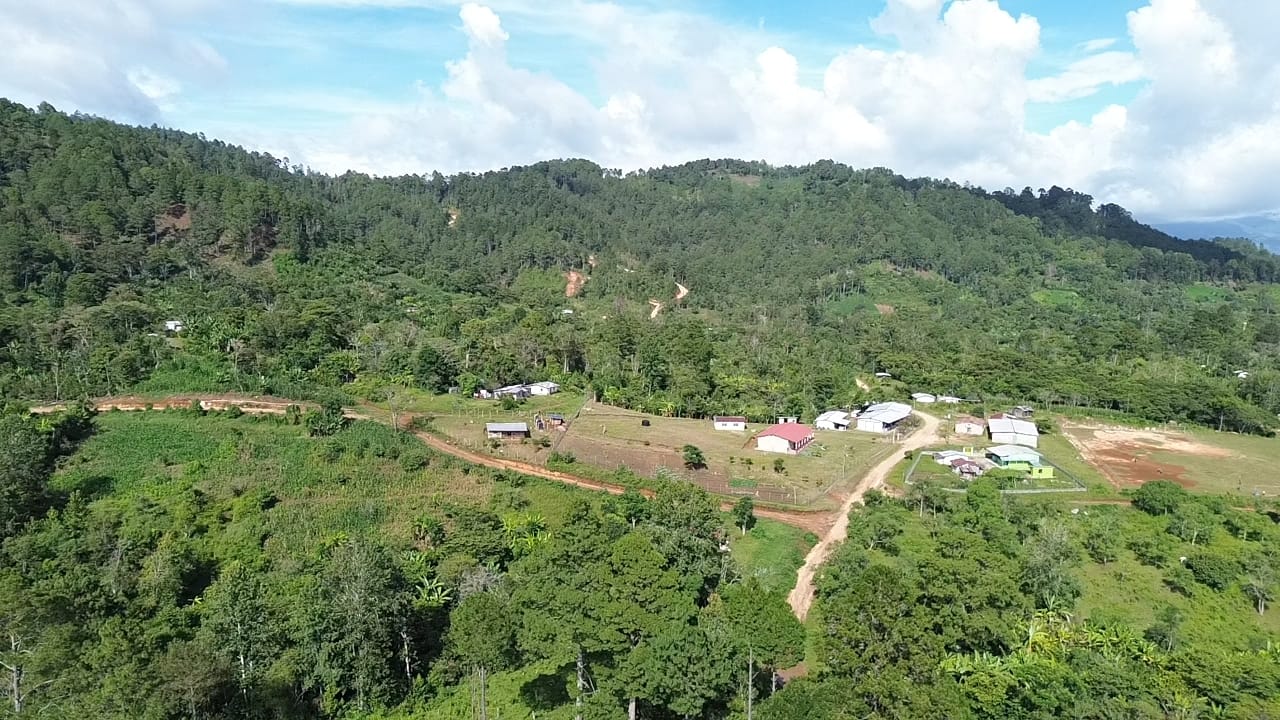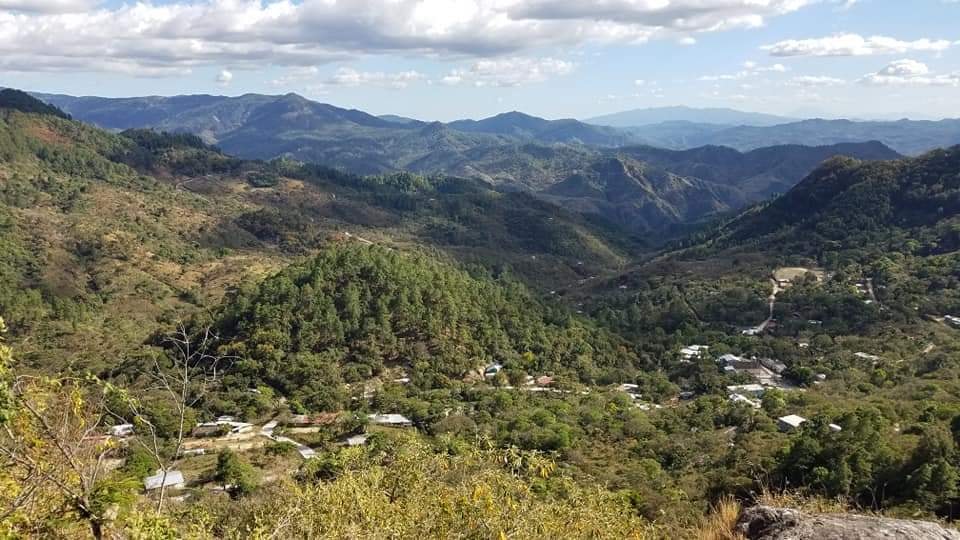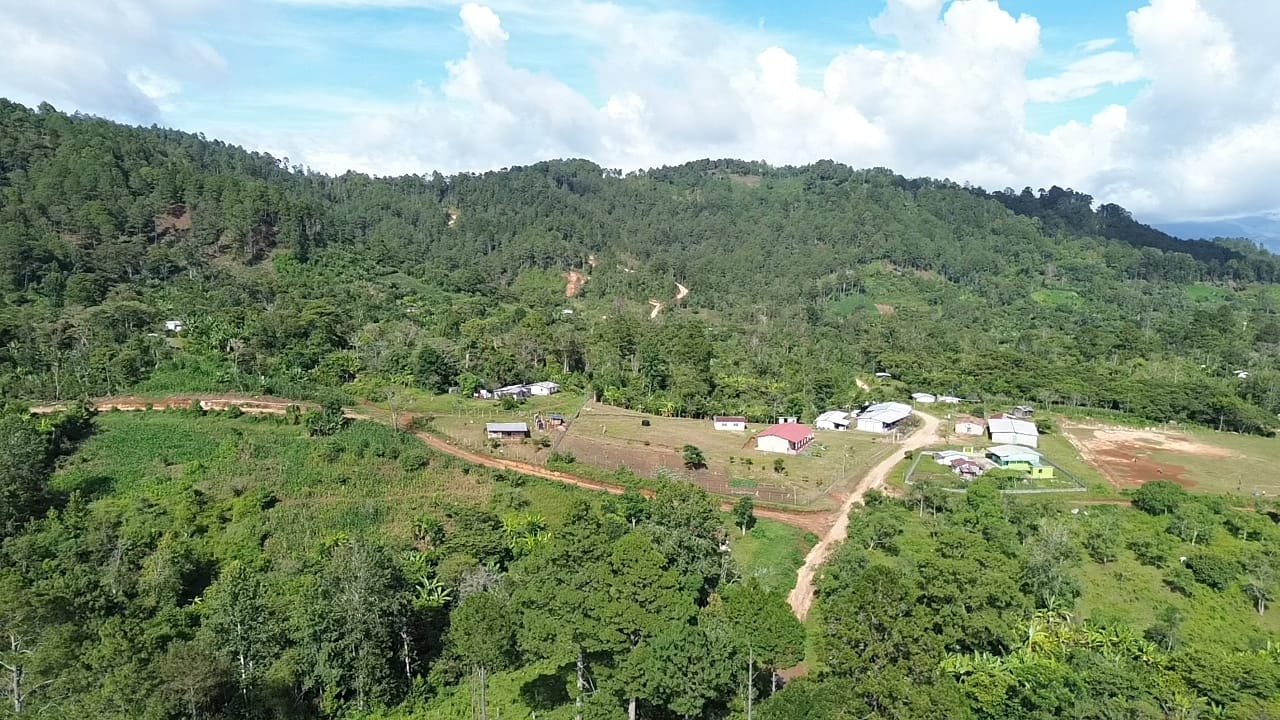Explore Intibucá Departament
Explore Intibucá Departament: Intibucá is a department in western Honduras known for its picturesque landscapes, traditional culture, and indigenous heritage.

Intibucá Departament 🌎
Explore Intibucá Departament. Here is a list of all the cities in Intibucá Departament.

La Esperanza

San Juan de Opatoro

San Marcos de la Sierra

San Francisco de Opalaca
Useful tips for the traveler ✅
Explore Intibucá Departament. Here are some useful tips for travelers visiting Intibucá Departament:

Explore Intibucá Departament
What is the best time to travel to Intibucá Departament
The best time to travel to Intibucá, Honduras, depends on your preferences and the activities you plan to engage in. Intibucá experiences a subtropical highland climate, characterized by mild temperatures and distinct wet and dry seasons. Here are some considerations to help you determine the best time to visit:
Dry Season (December to April): The dry season is generally considered the best time to visit Intibucá. During this period, rainfall is relatively low, and the weather is generally pleasant and suitable for outdoor activities. The days are typically sunny, and temperatures are comfortable, ranging from around 15°C (59°F) to 25°C (77°F). It’s an ideal time for hiking, exploring the natural beauty of the region, and visiting attractions like mountains, parks, and indigenous communities.
Rainy Season (May to November): The rainy season in Intibucá brings increased rainfall and higher humidity. The rainiest months are typically between June and September. Although the rainy season can result in occasional showers and more cloudy days, it also contributes to the lush green landscapes and vibrant vegetation. Traveling during this time can provide a unique opportunity to witness the region’s natural beauty and experience the local culture with fewer tourists. However, be prepared for the possibility of rain and consider that some remote areas may be more challenging to access due to muddy roads.
Temperature Considerations: Intibucá’s elevation contributes to cooler temperatures compared to the coastal regions of Honduras. Even during the dry season, the evenings and early mornings can be cool, particularly at higher elevations. It’s advisable to pack layers, including lightweight jackets or sweaters, to ensure comfort during the cooler hours.
Festivals and Events: Consider researching local festivals and events in Intibucá that may align with your interests. The region celebrates various cultural events throughout the year, including traditional fiestas, religious processions, and indigenous celebrations. These festivals offer insights into the local culture and traditions.
By considering the weather, activities, and cultural events, you can choose the best time to visit Intibucá and immerse yourself in its natural beauty, traditional culture, and rural charm.
How to get to Intibucá Departament
Getting to Intibucá, Honduras, usually involves a combination of different modes of transportation, primarily by land. Here are some common ways to reach Intibucá:
International Flights: If you are traveling from outside Honduras, you would typically fly into one of the major international airports in the country, such as Toncontín International Airport (TGU) in Tegucigalpa or Ramón Villeda Morales International Airport (SAP) in San Pedro Sula. These airports have connections to various international destinations. From there, you would continue your journey to Intibucá by land transportation.
Domestic Flights: Although Intibucá does not have its own airport, you can consider flying domestically to cities closer to the department, such as La Esperanza, the capital of Intibucá. Local airlines in Honduras offer domestic flights from major airports like Tegucigalpa or San Pedro Sula to La Esperanza. It’s advisable to check with airlines for flight availability and schedules.
Land Transportation: The most common way to reach Intibucá is by land transportation. From major cities in Honduras, you can take buses, private cars, or taxis to La Esperanza, the capital city of Intibucá. The journey from Tegucigalpa to La Esperanza by road typically takes around 4-5 hours, while from San Pedro Sula, it can take around 6-7 hours.
Buses: Public buses are available from major cities to La Esperanza and other towns within Intibucá. Bus services operate from bus terminals or specific bus stops. It’s recommended to check the schedules and departure points in advance, as they can vary. Local bus companies like Catisa and Hedman Alas operate routes to Intibucá from different cities in Honduras.
Private Transportation: If you prefer more flexibility or convenience, you can arrange private transportation services such as hiring a private car or taxi. This option allows you to have more control over your schedule and potentially make stops along the way.
When planning your journey to Intibucá, it’s advisable to check the latest travel advisories and guidelines from your local government or relevant authorities. Additionally, it’s recommended to plan your trip in advance, consider the time it takes to travel by road, and make necessary arrangements for accommodations and transportation within the department.
By utilizing the available transportation options and planning your trip accordingly, you can reach Intibucá and explore its beautiful landscapes, indigenous culture, and rural communities.
How to get around Intibucá Departament
Getting around Intibucá, Honduras, primarily relies on road transportation given the region’s mountainous terrain and the absence of other modes of transportation like trains or airports within the department. Here are the common methods of transportation for getting around Intibucá:
Buses: Buses are the most common mode of public transportation in Intibucá. They connect various towns and villages within the department. Local buses, known as “microbuses” or “colectivos,” operate on specific routes and make frequent stops along the way. Intercity buses connect different towns and have scheduled departures from central bus stations.
Taxis: Taxis are available in major towns and can be a convenient option for shorter distances or when traveling with luggage. It’s advisable to use licensed taxis and agree on the fare before starting your journey. In smaller towns or rural areas, shared taxis (collective taxis) may be more common, where multiple passengers share a ride along a designated route.
Private Vehicles: If you have your own vehicle or are renting one, driving in Intibucá allows for greater flexibility and independence. It provides the convenience of exploring remote areas and reaching specific destinations at your preferred schedule. However, it’s important to be cautious and experienced in driving on mountainous roads, as some routes can be steep, narrow, and winding.
Walking: Walking is a practical way to get around within towns or smaller communities in Intibucá. It allows you to explore at a slower pace, interact with locals, and fully immerse yourself in the natural surroundings. Just be aware that walking long distances between towns may not be feasible due to the mountainous terrain and the distances involved.
When using public transportation, it’s recommended to check bus schedules in advance, especially for intercity travel, as departures may not always be on a strict timetable. Additionally, be prepared for potential delays, especially in rural areas.
It’s worth noting that some remote areas of Intibucá may have limited or irregular transportation services. It’s advisable to plan your trips accordingly, allow for extra travel time, and seek local advice or information from reliable sources to ensure the availability of transportation options.
By utilizing buses, taxis, or private vehicles and being aware of the road conditions, you can navigate and explore the beautiful landscapes, charming towns, and indigenous communities of Intibucá.
National Airports
Intibucá is a department in western Honduras that is primarily characterized by its mountainous landscapes and rural communities. However, it does not have any national airports within its boundaries. The region’s remote nature and limited tourist infrastructure make air travel less common and practical.
The main point of entry for visitors to Intibucá is through the major airports in Honduras, such as Toncontín International Airport (TGU) in Tegucigalpa or Ramón Villeda Morales International Airport (SAP) in San Pedro Sula. From there, you would need to continue your journey to Intibucá by other modes of transportation, such as buses, private cars, or taxis.
It’s important to note that Intibucá is a relatively remote and less tourist-oriented region. As such, transportation options may be limited, and some areas within Intibucá may require navigating rough or unpaved roads. It’s advisable to plan your trip well in advance, seek local advice, and make arrangements through reliable local contacts or tour operators who are familiar with the region.
By understanding the transportation options available and planning your trip accordingly, you can reach Intibucá and explore its natural beauty, cultural heritage, and rural communities.
Trains in Intibucá Departament
Intibucá, being a mountainous and rural region in Honduras, does not have a train network. Train travel is not a common mode of transportation within the department or the surrounding areas.
The primary modes of transportation in Intibucá are by road, either through private vehicles, taxis, or buses. These options are more suitable for navigating the region’s mountainous terrain and reaching the various towns and villages within Intibucá.
When traveling within Intibucá, it’s important to consider the condition of the roads, which can be challenging in some areas, particularly in more remote locations or during the rainy season. It’s advisable to have a reliable vehicle, preferably with four-wheel drive, or hire a knowledgeable local driver who is familiar with the region’s road conditions.
Additionally, public buses are available in Intibucá and can be used for traveling between towns and villages. However, bus schedules may be irregular and services may be limited, especially in more remote areas. It’s recommended to check the schedules in advance and be prepared for potentially crowded and slow journeys.
While there are no trains in Intibucá, the region’s natural beauty and rural landscapes can be explored by other means of transportation, such as hiking or taking scenic drives. Local tour operators or guides can provide assistance in planning outdoor activities and exploring the picturesque mountains and rural communities in the department.
Before planning a trip to Intibucá, it’s advisable to check the latest travel advisories and guidelines from your local government or relevant authorities, as the region’s remote location and limited infrastructure may present logistical challenges for travelers.
Buses in Intibucá Departament
Buses are a common mode of transportation within Intibucá, Honduras. They provide a convenient and affordable way to travel between towns and villages within the department. While the road infrastructure may vary in condition, buses are still a popular choice for both locals and tourists.
In Intibucá, you will find different types of buses serving various routes. Here are some important points to know about buses in Intibucá:
Local Buses: Local buses, often referred to as “microbuses” or “colectivos,” are the primary means of transportation within towns and nearby areas. They operate on specific routes and make frequent stops to pick up and drop off passengers. These buses are usually smaller in size and may have limited seating capacity. It’s common for them to get crowded, especially during peak hours.
Intercity Buses: Intercity buses connect different towns and villages within Intibucá and to neighboring departments. These buses generally have larger seating capacities and provide a more comfortable travel experience compared to local buses. They operate on scheduled routes and have designated bus stops in each town.
Bus Stations: Each major town in Intibucá typically has a central bus station or a designated area where buses arrive and depart. These bus stations are the main hubs for intercity bus services, and you can find ticket counters, waiting areas, and basic facilities such as restrooms and small shops.
Schedules and Frequency: Bus schedules in Intibucá may not always follow strict timetables. Departure times can vary depending on factors such as demand, road conditions, and the arrival of passengers. It’s recommended to check the schedules in advance or consult with locals for the most up-to-date information.
Payment: Bus fares in Intibucá are usually paid in cash directly to the bus driver or conductor. It’s advisable to have small denominations of the local currency, Honduran lempiras, as drivers may not always have change for larger bills. The fare may vary depending on the distance traveled.
Comfort and Safety: Buses in Intibucá can range from modern, air-conditioned coaches to older, more basic vehicles. Comfort levels may vary, and some buses may not have luggage compartments. It’s recommended to keep an eye on your belongings and ensure their security during the journey.
Language: It’s helpful to have some basic knowledge of Spanish, as bus drivers and conductors may have limited English proficiency. Knowing a few common phrases or having a written note with your destination can assist in communicating with them.
As with any form of transportation, it’s important to exercise caution, especially when traveling on rural routes or during inclement weather. It’s advisable to follow local advice, use reputable bus companies when possible, and be aware of your surroundings for a safe and comfortable journey.
Overall, buses provide a practical means of transportation for exploring Intibucá and experiencing its natural beauty, traditional culture, and rural communities.
Accommodations in Intibucá Departament
Intibucá, Honduras, being a relatively rural and less tourist-oriented region, offers limited options for accommodations compared to more developed tourist destinations. However, there are still places to stay that cater to travelers exploring the department. Here are some types of accommodations you may find in Intibucá:
Hotels and Guesthouses: In towns like La Esperanza, the capital city of Intibucá, you can find hotels and guesthouses that offer basic accommodations with essential amenities. These establishments may vary in terms of size, facilities, and services provided. It’s advisable to book in advance, especially during peak travel seasons or if visiting during local festivals or events.
Eco-Lodges and Farm Stays: Intibucá’s natural beauty and rural landscapes provide opportunities for eco-tourism and farm stays. Some properties offer rustic or eco-friendly accommodations that allow you to experience the region’s natural surroundings and engage in activities like hiking, birdwatching, or learning about local agricultural practices. These types of accommodations often provide a more immersive and authentic experience.
Homestays: In certain areas of Intibucá, you may have the opportunity to stay with local families through homestay programs. This option allows you to experience the daily life and traditions of the local communities, while also supporting sustainable tourism initiatives. Homestays can be arranged through local tour operators or community-based tourism organizations.
Camping: For adventurous travelers, camping can be an option in Intibucá. With its beautiful landscapes, including mountains, rivers, and forests, there may be areas suitable for camping. However, it’s important to respect local regulations, obtain permission from landowners or authorities, and be self-sufficient with camping gear and supplies.
It’s important to note that accommodations in Intibucá may have limited facilities and services compared to more developed tourist areas. It’s advisable to manage your expectations and be prepared for basic amenities. It’s also recommended to check for reliable information, read reviews, and make reservations in advance.
When planning your trip to Intibucá, consider the location of your desired attractions or activities, as some areas may have limited accommodations. Additionally, it’s important to check the latest travel advisories and guidelines from your local government or relevant authorities to ensure a safe and enjoyable experience in the region.
By embracing the available accommodations and the rustic charm of Intibucá, you can have a unique and authentic experience while exploring the department’s natural beauty, indigenous culture, and rural communities.
Links
Visit Honduras.
https://www.presidencia.gob.hn/
Honduras travel tips
Our guide offers essential Honduras travel tips and insights for an unforgettable journey. Plan your trip with us!
Choose your destination 📍🗺
Transportation 🚥


